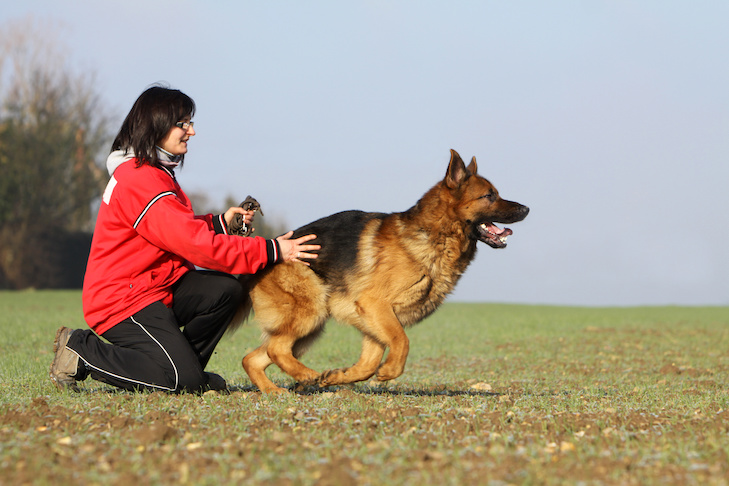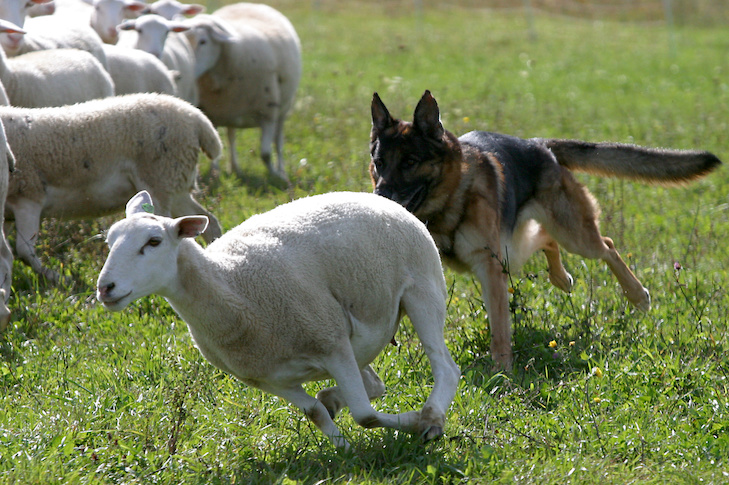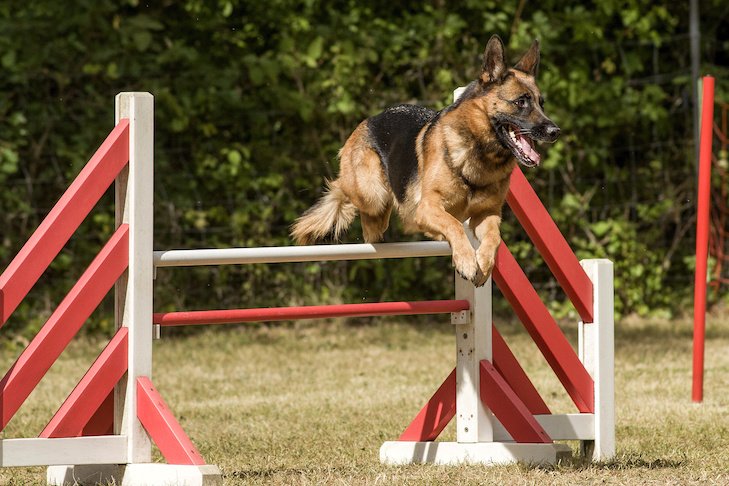
Should you have a German Shepherd? Those who are well-versed in the breed of German Shepherd Dogs would advise you that you should take the question to the experts. It’s possible that some more fundamental inquiries might help shed light on the situation. Tell me about the ideal dog you’d want to adopt. Tell me more about your trip plans with your dog. How much of your life (and wallet) can you devote to a dog? How would you describe your current way of life?
Puppys are popular pets because of their adorable appearance. Perhaps they’ve encountered the breed on film or television. Later on, they find out that their little puppy has grown into a rambunctious, playful adult weighing anything from 60 to 80 pounds. However, not all big dog breeds are suitable for city residences or low-key households. It all relies on the dog, its training, and its purpose as to how well it adapts to its new surroundings.
Your lifestyle, the size of your living quarters, and your commitment level to your dog should all go into the first portion of the response. The Herding, Working, and Sporting Groups include more than 60 breeds, many of which were bred to be formidable working animals. That’s why it’s important to provide a German Shepherd Dog plenty of opportunities to exercise its boundless reserves of vitality.
The German Shepherd Dog’s distinctive work ethic was bred into it from the beginning, making it popular with both governments and the general population. Let’s start with the history and background of the German Shepherd Dog Breed to get a feel for the breed and its work ethic. Knowing more about the breed in issue may help put a lot of the concerns raised into context.

Understanding the German Shepherd Dog Breed
Max Emil Friedrich von Stephanitz, a student at the Berlin Veterinary School in the late 1800s, developed an interest in the herding dogs then in use throughout Germany. Instead of heeding the advice of his family and studying to become a veterinarian or a gentleman farmer, he enlisted in the military.
While stationed as a cavalry lieutenant in the German countryside, Von Stephanitz developed a fondness for the local sheep-herding canines. He was impressed by their extraordinary ability as sheep herders, as well as their high levels of intellect and lightning-fast reactions. Sheep in Germany are often released from their enclosures to graze in fields by the side of the road. The dog is responsible for keeping the sheep on the grassy shoulder of the road, out of the path of speeding vehicles and away from the farmer’s crops. Tenting, often known as boundary herding, is a very difficult method of shepherding sheep. Herding “C” course is an AKC-sanctioned canine sport. It’s a reflection of that border work, or the invisible fence, as some call it.
While serving with the German military, Von Stephanitz continued to pursue his passion for herding dogs and immediately realized that he could improve the breed. He set out to do this by educating himself more. He had conversations with breeders and went to major dog exhibitions around the nation. In April of 1899, he and his buddy Arturo Meyer went to a fair where they saw a dog called Hektor Linksrhein. He was just four years old, yet he had the remarkable look of a young wolf. They paid almost 200 German gold marks for the dog because of how smart and complex he was. Von Stephanitz’s first dog was the foundation of his quest to create the perfect farm dog. On his vast farm near the Bavarian town of Griffith, he started a breeding program for German sheepdogs.

Initially, he focused on homogenizing the many “flavors” of sheepdogs found in Germany. Initially, it didn’t matter much how they appeared. He continued to prioritize improving upon what he saw as the most important characteristics for a German herding farm dog. Not caring about their herding instinct or their work ethic, he concentrated on their erect ears and wolfish build, which were prized by many fanciers.
He like those who were short and stocky. The majority of them sported prickly fur and curved tails. Some people just needed to calm down. Von Stephanitz bred dogs from the southern German state of Wurttemberg, known for their bigger stature, heavier bone structure, and docile nature. The compromise he was looking for was eventually within his reach. Ability and soundness in operation came first, then aesthetics. To guarantee each German Shepherd at a dog show has a steady disposition, judges now administer a brief temperament test.
Using phrases like “never idle, always on the move,” “well-disposed to harmless people but no cringer,” “excellent with youngsters,” and “always in love,” Von Stephanitz described his new species.
Work Ethic – The German Shepherd Dog’s
The special qualities, such as trainability and protective instincts, that may be found in these herding dogs have been emphasized from the start. Their unique herding skills and reliability gained widespread renown. As time went on, people realized how useful the breed might be for a variety of tasks. Morris Frank, who was also blind, traveled to Switzerland in 1929 to pick up his German Shepherd Dog, “Buddy.” Frank’s return opened the way for other blind people to employ German Shepherd Dogs as guide dogs. The breed would quickly become identified with blindness services and those involving a wide range of other impairments. German Shepherd Dogs consistently rank first due to their high IQ, high trainability, and strong work ethic. Rather of focusing on conformation and outward beauty, some breeders have started their own lines with temperament as the primary focus. It did not take long at all for breeding programs throughout the United States to begin breeding dogs specifically for service dog programs.

German Shepherd Owners Have a Lot to Say
Most GSD owners would state that the dog’s high energy level, resilience, and strength were major selling points. One of the most common arguments for why people should have one is because they are more alert and attentive than other pets.
Now we’ll hear from GSD owners themselves:
Mary Jane gushes over her male German Shepherd because “he is constantly near to her children and will position himself around 30-40 feet away from them and watches to monitor their play.” John, who is self-employed, gushes, “I adored my puppy because she always knows where I am and she can rely on me.” Nancy, a single person who lives in a neighborhood full of construction workers, has taught her German Shepherd both English and German instructions. When she is in the company of strangers, she resorts to issuing one-word English and German directives. She assures me that I may order him to sit or to get down in either English or German. He is bilingual, fluent in both languages. I adore him and feel protected when he is there, so he will just stand there with his ears perked up and his eyes fixed on everyone.
The early history of the breed also contributed to its popular appeal and high demand as a pet. During World War I, the German military first recognized the necessity for a specialized breed of dog. Because of its bravery and lack of fear in dangerous situations, the German Shepherd Dog was put to service as a battlefield courier, sentry dog, and bearer of medical supplies and ammunition. It was therefore very useful in both day and nighttime conflicts.
The German army and others quickly realized the worth of this canine soldier. As a result, the breed’s value and reputation were effectively spread to other nations. Due to a shift in public opinion regarding Germans, the German Shepherd Dog was renamed the Shepherd Dog in the United States in 1918. The British retaliated by changing the name of the breed to Alsatians.
After WWII, the breed’s reputation as a fighting dog flourished, and the tide turned once again. The film industry responded by introducing us to canine superstars like Rin-Tin-Tin and Strong Heart. Its fame as a breed shot up overnight.

Is a German Shepherd Dog Right for You in the End?
The German Shepherd Dog has a long and illustrious history of working and protecting families, earning it the reputation as a trustworthy companion and protector in modern times.
Owners of German Shepherd Dogs should be ready to deal with a high-energy animal that has to be actively engaged. While GSDs make wonderful pets, it’s important to remember that they were bred to work and will still need regular exercise and mental stimulation if you want to keep them as house pets. You should know that your dog need daily mental and physical stimulation. Do you feel you can devote the necessary time and effort to socializing and training your GSD? How secure is your financial situation in case you suddenly need medical care? How much room do you have for this massive breed? Before you go out and get a German Shepherd, you may want to consider some of these factors.
The widespread adoration and positive perception of the German Shepherd Dog may be traced back to the breed’s prominent roles in policing, dog sports, the media, and community service. Find a reputable breeder if you want to bring a GSD into your home. To help choose the best breed for your family, a good breeder will ask you about your daily routine and interests and would be happy to answer any questions you have. Assuming you and the breeder agree that a German Shepherd Dog would be a good fit for you, you can look forward to a fun and exciting new chapter in your lives together.
Since he was five years old, when his grandfather gave him his first puppy, Dr. Carmen Battaglia has always kept dogs. Together with his wife Nancy, he started the Van Cleve German Shepherd Dog breeding program in 1960. He has judged the German Shepherd National speciality show in the United States, Canada, and Mexico, making him a bona fide authority on the breed. He is one of the few judges who have worked 13 different national specialities, and his expertise is much sought after in the judging of Herding, Working, and select Sporting breeds (Australian Shepherd, Chinese Shar-pei, Bouvier, Puli, Australian Cattle Dog, Belgium Sheep Dog, Border Collie, Islandic Sheepdog, Canaan Dog, and German Shepherd).
He has bred and studied dogs extensively throughout the course of his life, which has resulted in many books and over seventy articles on canine topics and education. His work on canines may be found in the AKC Gazette, Canine Chronicle, Dog World, Dog News, Canadian Shepherd Journal, South African Dog Magazine, and canine periodicals from Australia, Canada, England, Italy, Germany, Hungary, and Ireland.